Is OnePlus 2 the flagship killer you've been waiting for? [Review]
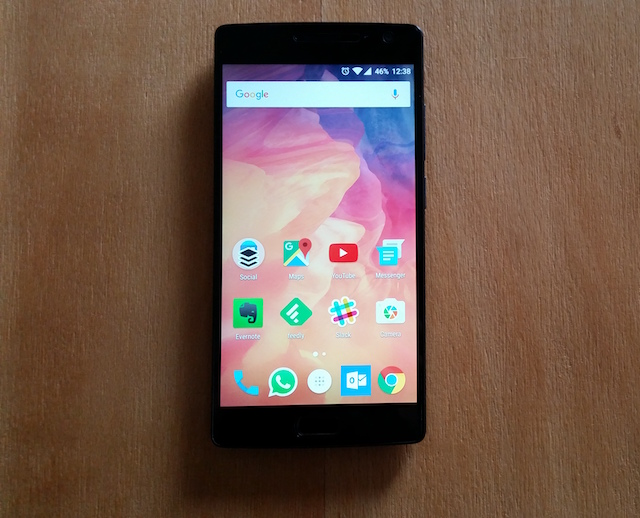
Top-end specs, a large screen, near-vanilla Android, and a price tag on the South side of $400 make OnePlus 2 a force to be reckoned in the battle for the "Smartphone of the year" award. It certainly has what it takes to get consumers' attention, as over four million reservations were made in the first couple of weeks after launch. But, hype can only get the "2016 flagship killer" so far. Question is, does it live up to it?
I have used a OnePlus 2, in 64GB trim, as my daily driver for well over a month now to find out whether it is worthy of its self-given title, and how it stacks up against some of the flagships it has in its sights, like Apple's bigger iPhone.
Knowing that I may have the opportunity to review a OnePlus 2, prior to the launch I had decided to not go through its specs or read any of the reviews that would follow. Of course, I had a general ideal of what it would offer, but, other than that, I didn't even know what resolution screen it has. Quite frankly, I didn't even care, because how the device feels to use every single day matters more than what it promises on paper.
First Things First: The Box
OnePlus 2 comes in one of the nicest packages I have seen, making for a pretty exciting unboxing experience. After putting aside an iPhone 6 Plus for the duration of the review, these tiny details matter.
Inside the box you will find a OnePlus 2, the power plug and a USB-C cable. Of course, there is also the usual documentation that everyone will probably ignore. No headphones are included, however, so you will have to supply your own. There are two headphone options offered as separate purchases, JBL E1+ costing $39.99 and OnePlus-branded Silver Bullet headphones priced at $14.99. I have not had a chance to test either so far, so I cannot comment on the quality of the sound.
OnePlus has put some thought into the USB cable and power plug. They have matching colors -- white and red -- and the cable itself features a reversible connector -- that can be plugged in standard USB ports -- at the end that goes into the power plug. It is an nice touch, one that I would love to see other manufacturers copy. The cable has a nice silicone tie to keep it neatly rolled during storage.
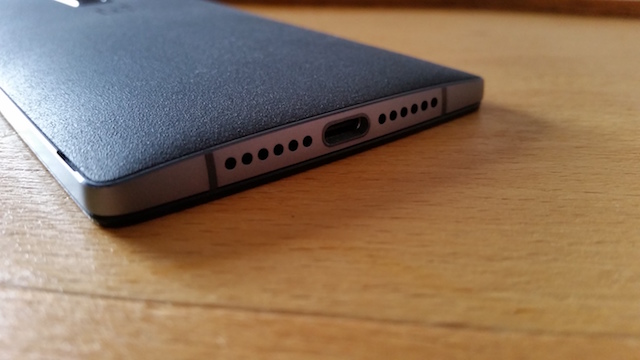
The novel feature when discussing the USB cable, however, is the USB-C connector that can be inserted both ways into a OnePlus 2. It makes charging a tad easier, but it also means you can't use any of your other USB cables to charge your new smartphone. It is a minor disadvantage at the moment, but a disadvantage nonetheless. Keep this in mind if you plan on buying OnePlus 2.
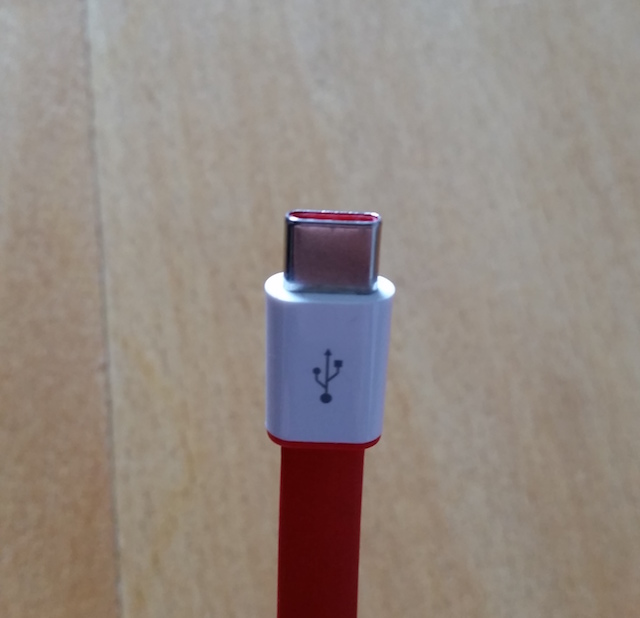
I recommend grabbing a spare charging cable or connector adapter to throw inside your traveling bag. At $5.49 for the meter-long version or $6.99 for the 1.5m model, it is reasonably cheap. The adapter is pricier at $9.99.
Speaking of prices, the 64 GB model can be had for $399 through OnePlus while the 16 GB version is $50 cheaper at $349. I strongly recommend going with the more expensive version, because it packs more RAM (4 GB instead of 3 GB) and, most importantly, the storage capacity is fixed -- there is no microSD card slot for expansion.
How Does It Look?
OnePlus 2 has a certain charm to it. The version that I have been testing has the Sandstone Black back cover, which I find to be well thought out. The finish is textured and grippy, which I find ideal on a phablet such as OnePlus 2. There's little chance of dropping it based on my experience with the device.
OnePlus has opted for a plastic back cover as the default choice, but you can get all sorts of optional, "StyleSwap", covers. There are some interesting options, like a carbon fiber-inspired model and a Bamboo cover. Prices range between $10.49 and $49 at the time of writing this article. The most-expensive option is the Bamboo cover, while the cheapest is the standard Sandstone Black model.
OnePlus has designed the optional back covers for customers who want to truly make their OnePlus their own but, as far as this user is concerned, the stock back cover looks good enough to keep on for the foreseeable future. A replacement only costs $10.49, in case it gets damaged or too dirty to clean, so it also has that in its favor.
I am saving the best for last though. The back cover may be nice, but it does not compare to the chamfered metal edges which give OnePlus 2 a distinctive look when compared to other smartphones in this price range. It is not as premium-looking as something like an iPhone 6s Plus, but it still looks the part from my point of view. The side buttons are all metal too, which helps in this regard.
Speaking of the buttons, on the left side OnePlus has fitted a slider which controls Android's Interactions (Quiet Hours, if you will). There are three positions: first, where all interactions are allowed, second, where only priority interactions go through, and, third, which blocks all interactions apart from alarms.
In practice, I find it extremely intuitive and easy to use, but I wish OnePlus included a software option to set a time-frame for when quiet hours should automatically kick in. It would remove a step I often forget about at the end of a long day.
The front of the device is very clean, with only the fingerprint scanner standing out, which doubles as a home button/sensor. OnePlus has cleverly applied a screen protector prior to shipping, removing the need to add one yourself. It can be removed, but I have decided to keep it on since it was professionally installed and there were no air bubbles underneath it. I advise you do the same.
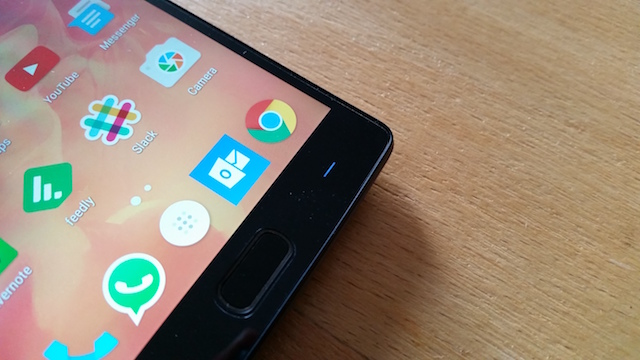
At the top of the screen there is an small but elegant notification LED. The colors it displays can be customized in the Settings menu, which is something that Android modders will certainly appreciate as it removes the need to install third-party customization apps to personalize it -- well, at least in my case it did.
That Screen
That screen is fantastic. I love the size and I also love how good it looks. At 5.5-inches it makes OnePlus 2 bigger than a standard-sized flagship smartphone, but I have no complaints in this regard after previously using an iPhone 6 Plus as my daily driver.
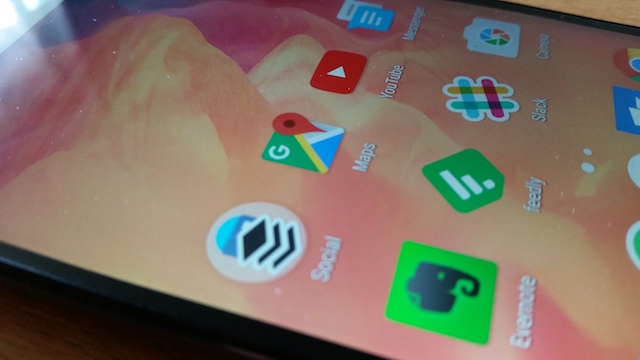
Thanks to iPhone 6 Plus, I am now a phablet convert. The big screen amplifies the user experience with OnePlus 2, as it makes things like browsing, watching videos and navigating around a foreign city much easier and more pleasant.
OnePlus 2 works great as a navigation device when coupled with Google Maps. The screen is an obvious reason, but the speaker -- yes, there is only one -- is also great, being loud enough to hear instructions, even on a motorcycle ride, with earplugs on, when stored in my jacket's chest pocket. For a moment I was trying to figure out where the instructions were coming from, before realizing Google Maps was running in the background on my OnePlus 2.
What I also like about the screen on OnePlus 2 is that it is not a 2K panel. No, OnePlus has opted for a 1080p screen, and that is perfectly fine in my book. The extra resolution is not needed, as it would put some added strain on the processor and, quite likely, the battery too.
If I have one complaint about the screen it is that the adaptive brightness does not appear to be properly tuned just yet. Taking it out of my pocket when, for instance, it's sunny out, the brightness doesn't adapt to the lighting conditions as quickly as I would like it to. A workaround would be to set the brightness higher, but I wish there was no need to do that.
Where's The Lag?
That was my first question after using OnePlus 2 for the first time. My iPhone 6 Plus has spoiled me when it comes to the speed at which everything happens, and I was pleasantly surprised to see that OnePlus 2 is not that far off in this regard.
OnePlus 2 runs a slightly-tweaked version of Android 5.1 Lollipop, and it is generally extremely quick to respond. The only instances where there is a slight delay involve hitting the home button, in my case. I believe this is down to the software waiting to see if there is a short tap, double tap or long tap involved.
What the home button does -- the same goes for the other two capacitive buttons -- can be customized in the Settings menu, and I assume that, in order to determine which tap pattern you wish to use, the software has a slight delay introduced to give you enough time to, say, double tap on the home button to bring up Google Now -- as opposed to only recognizing the first tap, which would take you to the homescreen.
I have noticed a couple of other instances when there was noticeable lag, but those are few and far between. Generally, OnePlus 2 is, to describe it in one word, quick. For a device that is touted to be a "flagship killer" but costs less -- half the price even -- than a typical flagship, it is much more responsive than I expected it to be. With a more expensive rival close to it, you wouldn't be able to tell the difference.
In terms of outright performance, OnePlus performs, again, extremely well. The octa-core Qualcomm Snapdragon 810 processor, with 4 GB of RAM on board, takes care of that. I have noticed no overheating issues during my time with the device, but I am not exactly a hardcore gamer having only played a couple of titles here and there -- which it handled great, by the way. OnePlus 2 is generally colder to the touch which, I believe, is made possible by the choice of back cover material.
Generally speaking, Android flagships are not lacking in processing power these days. Most of them also have a Snapdragon 810 processor, but not coupled with as much RAM. Having 4 GB of RAM means multitasking is handled well. Instances where the average app has to reload content are typically very rare to non-existent in my experience. As someone once said, "there's no replacement for displacement". In the case of OnePlus 2 there is certainly no shortage of RAM.
What About the Camera?
Camera performance is an aspect that I usually tend to pay close attention to when evaluating a smartphone. I love photography, so I want the pictures that come out of the camera to look great. At this level, it's a must. I have invested some time in learning how to use a dedicated camera, but when reviewing a smartphone the only thing that I personally care about is how it performs when using only a single button, namely the shutter.
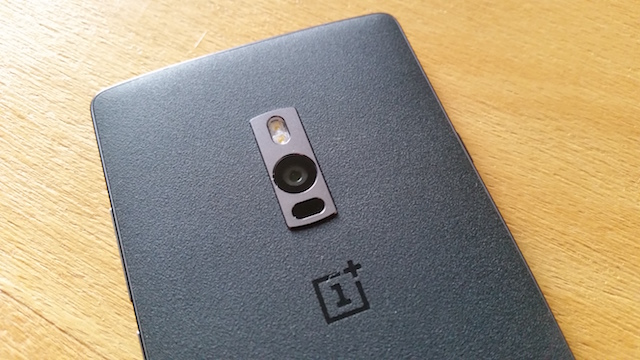
So everything that you will see below is taken in Auto mode. I do not want to mess around with the manual mode or go through the settings to adjust all sorts of things to get a good-looking photo, because the convenience of having a good smartphone camera would then be lost. I might as well bring a "proper" camera. But enough said.
Here's the gist of it: when there's light, OnePlus 2 will produce quality photos. Just look at this one below, shot against the Sun. I surprised myself after seeing it. There's just something about it that I love, and I can't figure out what. (If Honda wants to use it for promotional purposes, I'm open to discuss it. Uncalled-for self-advertising moment is now over.)
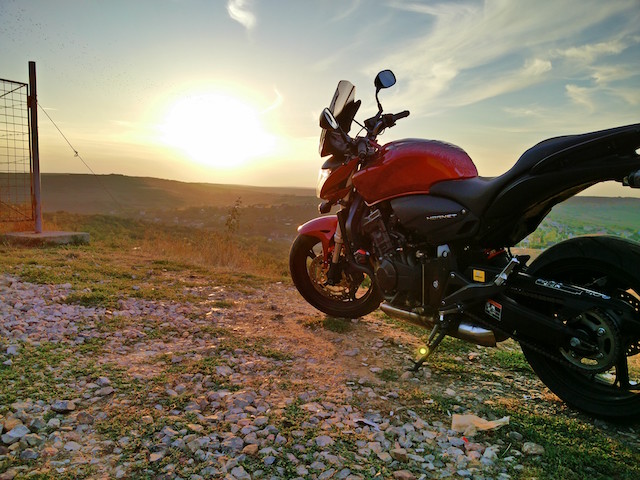
There is plenty of resolution in OnePlus 2's photos, and I am generally not left wanting for more. Heck, my iPhone 6 Plus just has an 8 MP shooter, and I think that's more than enough for my needs. As you may know, more megapixels is not the goal; a big sensor is, and when we are talking about smartphones there is only so much room for one.

But that's not the problem with the camera on the back of OnePlus 2. The problem is its low-light performance, which is held back in a big way by the apparent lack of optical image stabilization. In fact, it is present, but it seems to have so little effect on the quality of the images that it might as well not be baked in.
Low-light photos are not terrible, but they tend to suffer when there's any shake added into the mix or when there's movement in the frame. To get a decent-looking shot in poorly lit areas, a smartphone camera ideally needs a large sensor, which a smartphone simply cannot have, a large lens aperture, which OnePlus 2 has (it's an f/2.0 lens), and optical image stabilization.
Two out of three ain't bad -- in fact, it's the most a smartphone can reasonably achieve -- but the ineffective third component in this equation means OnePlus 2 is only resting on its lens to get the job done.
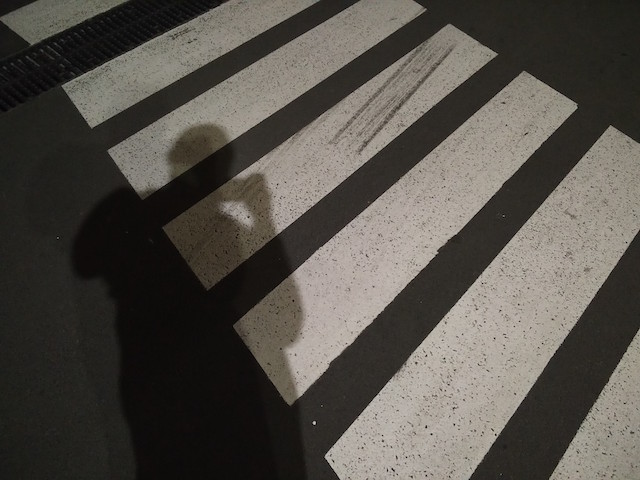
No matter how large the aperture is, it cannot deliver long-enough shutter speeds on its own -- which freeze motion in the shot, and typically make everything look sharp -- without bumping the ISO to the point where everything is too grainy to be pleasantly looking. Thankfully, OnePlus 2 does not go down the high ISO route, but it tends to turn out blurry images when too much motion's involved. What you see here are photos taken while trying to stay as still as possible; the results ain't bad, but most snaps will not be as good.
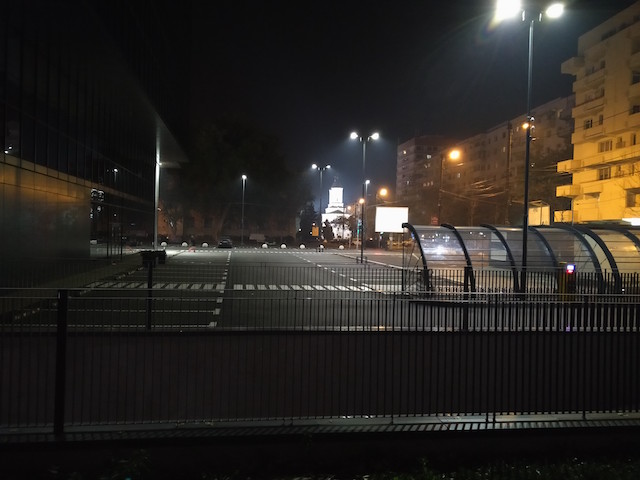
I may probably sound overly harsh, but this is because in comparison to how the camera performs in daylight and well-lit conditions, and how good the smartphone is in general, its low-light performance is not on the same level.

The same can be said about other flagships, if we are to be entirely fair here, like iPhone 6 and iPhone 6s. My former iPhone 6 would perform well below my iPhone 6 Plus in this regard, and it was priced twice as high as OnePlus 2. For $400, I think this -- more specifically, the weak optical image stabilization -- is a downside anyone can live with.
Such a negative is much easier to swallow at $400 than it is at $800 or more. You can have high expectations from a smartphone at this price level and demand nothing but perfection, but, if it fails to exceed in some areas, you can, realistically speaking, accept that more easily given the cost.
Battery Life
Battery life depends on so many things that it is impossible for anyone to give you a clear idea on how much OnePlus 2 might last in your case. Obviously, the less you use it and the less it syncs data in the background, the longer the battery will last.
There's a 3,300 mAh battery inside, in case you were wondering and, given its size, there is plenty of capacity to go around to all the power-hungry components. With my typical usage, battery life tends to range between a day and slightly over it.
Two-day battery life is not out of the question, but I have not seen this often during my time with OnePlus 2. I tend to keep everything on, and have lots of data synchronization done in the background -- social media notifications, lots of emails, and so on -- so your results may vary.
With an iPhone 6, I could barely get to the end of the day, but with my iPhone 6 Plus I would consistently get to the end of the second day. OnePlus 2 is somewhere in between the two, albeit much closer to the phablet. Expect similar results when compared to iPhone 6s and iPhone 6s Plus, seeing as battery life is similar -- if not slightly worse -- when compared to their predecessors.
To paint a clearer picture, after more than a day off the charger and over 3:40 hours of screen on time, I am down to 18 percent battery remaining and six hours left before it calls for a power break. In my case, I notice that signal strength plays a significant role on battery life, and these results are achieved with reasonable signal strength.
Am I happy with the battery life? In a word, absolutely. Considering how much syncing is done, and how little I try to help the battery, I would be really surprised if it lasted any longer. One way I see that happening is through a software update to Android 6.0 Marshmallow, which comes with some major energy efficiency optimizations in tow.
I should point out that it is possible to squeeze more hours of battery life by turning to the power saver mode. It can be enabled on demand, or set to kick in automatically when the battery reaches a certain percentage.
It disables some features, as you might expect, after it kicks in, but it also makes a difference. I typically tend to charge before the battery gets to around 20 percent so, as a result, I rarely make use of it. The highest battery percentage it can kick in at is 15 percent, the lowest is 5 percent.
The Oxygen OS User Experience
I am a fan of what OnePlus has done with the software. OnePlus 2 runs a lightly-customized version of Android 5.1.1 Lollipop, called OxygenOS 2.0, which gives you some lovely extras while keeping the user experience of the base operating system largely intact. Pick it up, after using a Google Nexus device running the same OS, and you might wonder if OnePlus 2 is not actually rocking an AOSP ROM. (Modders sure know what I mean.)
Most custom options can be found in the Settings menu, which is searchable in OxygenOS 2.0 by tapping on the magnifying glass on the upper-right corner of the menu. Everything is logically laid out, so I have only turned to it for testing.
OnePlus has enhanced Android Lollipop by giving users more options to customize how the menu and back buttons work, enable new gestures, configure app permissions, switch to a dark theme and so on. It's a sensible approach to customizing Android, and I wish Google would take a look at what OnePlus has done and copy some of those features for the vanilla flavor of Android. Let's talk a bit about some of these tweaks.
OnePlus gives users the option to choose between on-screen and capacitive buttons, right from the initial setup. This can be easily changed at the flick of a switch. Given how OnePlus is designed, I prefer to go with the latter option as it keeps the homescreen cleaner.
For those who like to control what their apps are doing, OxygenOS 2.0 has been designed to allow users to modify app permissions. For instance, you can disable an app's location access, or prevent it from accessing the camera. Such a feature Google has only included in Android 6.0 Marshmallow, while other vendors still haven't explored this possibility.
In Developer options, you will find extras such as the option to allow for the bootloader to be unlocked, which you won't find in most Android handsets, and a restart menu which exposes the option to reboot straight to the recovery or bootloader, something which, again, most vendors don't bother with. For modders, OnePlus 2 is great option.
Building on top of Android Lollipop is likely what makes OxygenOS 2.0 so fast and pleasant to use. I am a fan of keeping things close to stock, so I like that there is not all that big of a difference in terms of the overall user experience between my Nexus 7 running Android 6.0 Marshmallow and OnePlus 2.
Verdict
OnePlus 2 is labeled as a flagship killer and, for the money, it is obvious to see why. But bold advertising claims aside, it is one of the best Android smartphones that you can buy right now. OnePlus 2 is right up there with the big boys, no question about it.
The difference between OnePlus 2 and a "proper" flagship is so small that plenty of people who are interested in a device in this segment would not normally be able to justify the price difference. That is its main appeal, after all: top-end specs at an affordable price that makes you forget about that traditional flagship.
But, in talking about specs, some people might miss that OnePlus 2 is an attractive package overall. The user experience is solid, the display is great, the camera is nice, battery life is good, it's well put together, and it performs like it costs a few hundred dollars more. There's way more to like about it than you might think.
However, we cannot forget about the order system, which doesn't allow anyone to head over to OnePlus' online store and buy it. It's a shame, really, because without it in place more people would be willing to get one. But, if you are among the lucky folks who have an invite, go for it. The value proposition is simply unbeatable.
Photo Credit: Mihaita Bamburic
